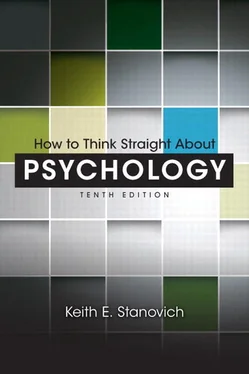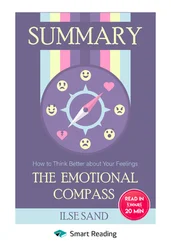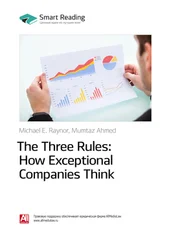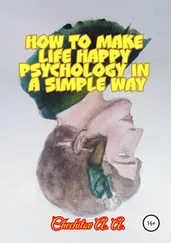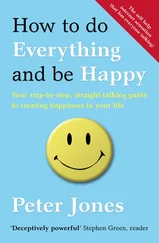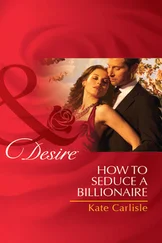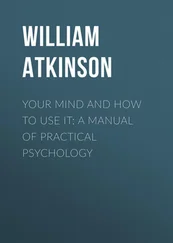In this chapter, we focus in more detail on the third general characteristic of science that we discussed in Chapter 1: Scientists deal with solvable problems. What scientists most often mean by a solvable problem is a “testable theory.” The way scientists make sure they are dealing with testable theories is by ensuring that their theories are falsifiable, that is, that they have implications for actual events in the natural world. We will see why what is called the falsifiability criterion is so important in psychology.
Theories and the Falsifiability Criterion
Benjamin Rush fell into a fatal trap when assessing the outcome of his treatment. His method of evaluating the evidence made it impossible to conclude that his treatment did not work. If the recovery of a patient meant confirmation of his treatment (and, hence, his theory of medicine), then it only seems fair that the death of a patient should have meant disconfirmation. Instead, he rationalized away these disconfirmations. By interpreting the evidence as he did, Rush violated one of the most important rules regarding the construction and testing of theories in science: He made it impossible to falsify his theory.
Scientific theories must always be stated in such a way that the predictions derived from them could potentially be shown to be false. Thus, the methods of evaluating new evidence relevant to a particular theory must always include the possibility that the data will falsify the theory. This principle is often termed the falsifiability criterion, and its importance in scientific progress has been most forcefully articulated by Karl Popper, a philosopher of science whose writings are read widely by working scientists.
The falsifiability criterion states that, for a theory to be useful, the predictions drawn from it must be specific. The theory must go out on a limb, so to speak, because in telling us what should happen, the theory must also imply that certain things will not happen. If these latter things do happen, then we have a clear signal that something is wrong with the theory: It may need to be modified, or we may need to look for an entirely new theory. Either way, we shall end up with a theory that is nearer to the truth. By contrast, if a theory does not rule out any possible observations, then the theory can never be changed, and we are frozen into our current way of thinking, with no possibility of progress. Thus, a successful theory is not one that accounts for every possible outcome because such a theory robs itself of any predictive power.
Because we shall often refer to the evaluation of theories in the remainder of this book, we must clear up one common misconception surrounding the word theory. The misconception is reflected in the commonly used phrase “Oh, it’s only a theory.” This phrase captures what laypeople often mean when they use the word theory : an unverified hypothesis, a mere guess, a hunch. It implies that one theory is as good as another. This is most definitely not the way the word theory is used in science! When scientists refer to theories, they do not mean unverified guesses.
A theory in science is an interrelated set of concepts that is used to explain a body of data and to make predictions about the results of future experiments. Hypotheses are specific predictions that are derived from theories (which are more general and comprehensive). Currently viable theories are those that have had many of their hypotheses confirmed. The theoretical structures of such theories are, thus, consistent with a large number of observations. However, when the database begins to contradict the hypotheses derived from a theory, scientists begin trying to construct a new theory (or, more often, simply make adjustments in the previous theory) that will provide a better interpretation of the data. Thus, the theories that are under scientific discussion are those that have been verified to some extent and that do not make many predictions that are contradicted by the available data. They are not mere guesses or hunches.
The difference between the layperson’s and the scientist’s use of the word theory has often been exploited by some religious fundamentalists who want creationism taught in the public schools (Miller, 2008; Scott, 2005). Their argument often is “After all, evolution is only a theory.” This statement is intended to suggest the layperson’s usage of the term theory to mean “only a guess.” However, the theory of evolution by natural selection is not a theory in the layperson’s sense (to the contrary, in the layperson’s sense, it would be called a fact; see Randall, 2005). Instead, it is a theory in the scientific sense. It is a conceptual structure that is supported by a large and varied set of data (Dawkins, 2010; Shermer, 2006; Wilson, 2007). It is not a mere guess, equal to any other guess. Instead, it interlocks with knowledge in a host of other disciplines, including geology, physics, chemistry, and all aspects of biology. The distinguished biologist Theodosius Dobzhansky (1973) made this point in a famous article titled “Nothing in Biology Makes Sense Except in the Light of Evolution.”
The Theory of Knocking Rhythms
A hypothetical example will show how the falsifiability criterion works. A student knocks at my door. A colleague in my office with me has a theory that makes predictions about the rhythms that different types of people use to knock. Before I open the door, my colleague predicts that the person behind it is a female. I open the door and, indeed, the student is a female. Later I tell my colleague that I am impressed, but only mildly so because he had a 50 percent chance of being correct even without his “theory of knocking rhythms”—actually even higher, because on most campuses females outnumber males. He says he can do better. Another knock comes. My colleague tells me it is a male under 22 years old. I open the door to find a male student whom I know to be just out of high school. I comment that I am somewhat impressed because our university has a considerable number of students over the age of 22. Yet I still maintain that, of course, young males are quite common on campus. Thinking me hard to please, my colleague proposes one last test. After the next knock, my colleague predicts, “Female, 30 years old, 5 feet 2 inches tall, carrying a book and a purse in the left hand and knocking with the right.” After opening the door and confirming the prediction completely, I have quite a different response. I say that, assuming my colleague did not play a trick and arrange for these people to appear at my door, I am now in fact extremely impressed.
Why the difference in my reactions? Why do my friend’s three predictions yield three different responses, ranging from “So what?” to “Wow!”? The answer has to do with the specificity and precision of the predictions. The more specific predictions made a greater impact when they were confirmed. Notice, however, that the specificity varied directly with the falsifiability. The more specific and precise the prediction was, the more potential observations there were that could have falsified it. For example, there are a lot of people who are not 30-year-old females and 5 feet 2 inches tall. Note that implicitly, by my varied reactions, I signaled that I would be more impressed by a theory that made predictions that maximized the number of events that should not occur.
Good theories, then, make predictions that expose themselves to falsification. Bad theories do not put themselves in jeopardy in this way. They make predictions that are so general that they are almost bound to be true (e.g., the next person to knock on my door will be less than 100 years old) or are phrased in such a way that they are completely protected from falsification (as in the Benjamin Rush example). In fact, a theory can be so protected from falsifiability that it is simply no longer considered scientific at all. Indeed, it was philosopher Karl Popper’s attempt to define the criteria that separate science from nonscience that led him to emphasize the importance of the falsifiability principle. There is a direct link here to psychology and to our discussion of Freud in Chapter 1.
Читать дальше
